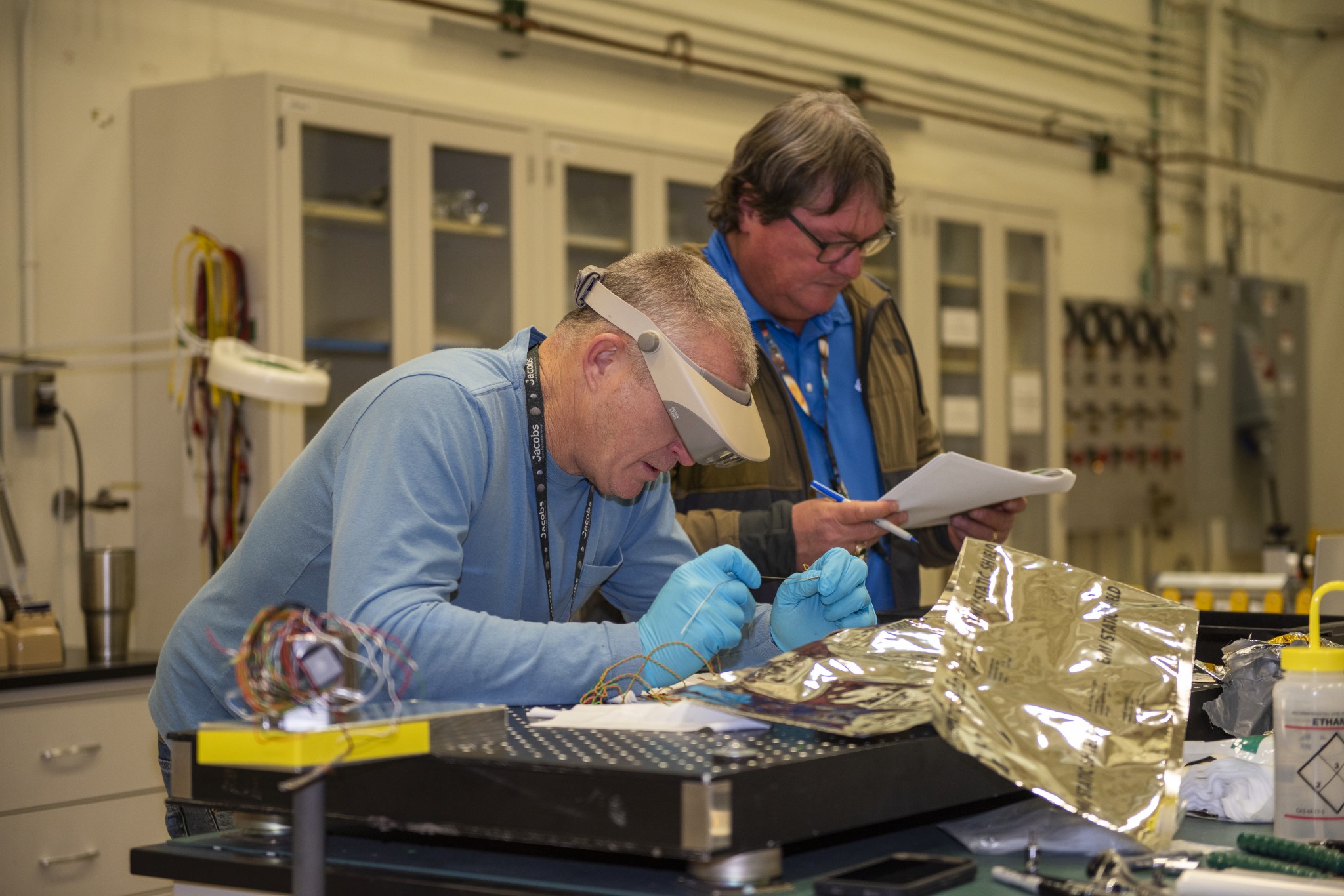3 min read

By Jessica Barnett
During the International Space Stations more than 25 years of operation, there have been more than 3,000 experiments conducted aboard the microgravity laboratory and making sure scientific samples are kept safe through launch, spaceflight, experimentation, and the return trip to Earth takes a great deal of planning, testing, and preparation across NASA.
In February, team members at NASA's Marshall Space Flight Center in Huntsville, Alabama, handled the de-integration of zinc selenide-based crystals grown on the space station as part of an experiment to study how a lack of gravity might affect the crystals' growth and structure. The experiment was conducted using six sample cartridge assemblies heated up to 1,200 degrees Celsius (2,192 degrees Fahrenheit) inside the Materials Science Laboratory of the Materials Science Research Rack on the space station.
John Luke Bili, lead systems test engineer for the sample cartridge assemblies within Marshall's Instrument Development, Integration, and Test Branch, begins the process by working with engineers, scientists, project personnel, and the experiment's principal investigator to create an ampoule, or sealed glass vial, to use as a sample container.
"We'll take the ampoule and do some ground testing, like a normal flight integration," Bili said. "We'll assemble it with the hardware we have, then we are responsible for completing different mitigation efforts to prepare for sealing the ampoule up and processing it at the required high temperatures."
The team exposes the test article to extreme heat and pressure using a duplicate of the furnace on the space station, allowing them to also test the experiment's software.






